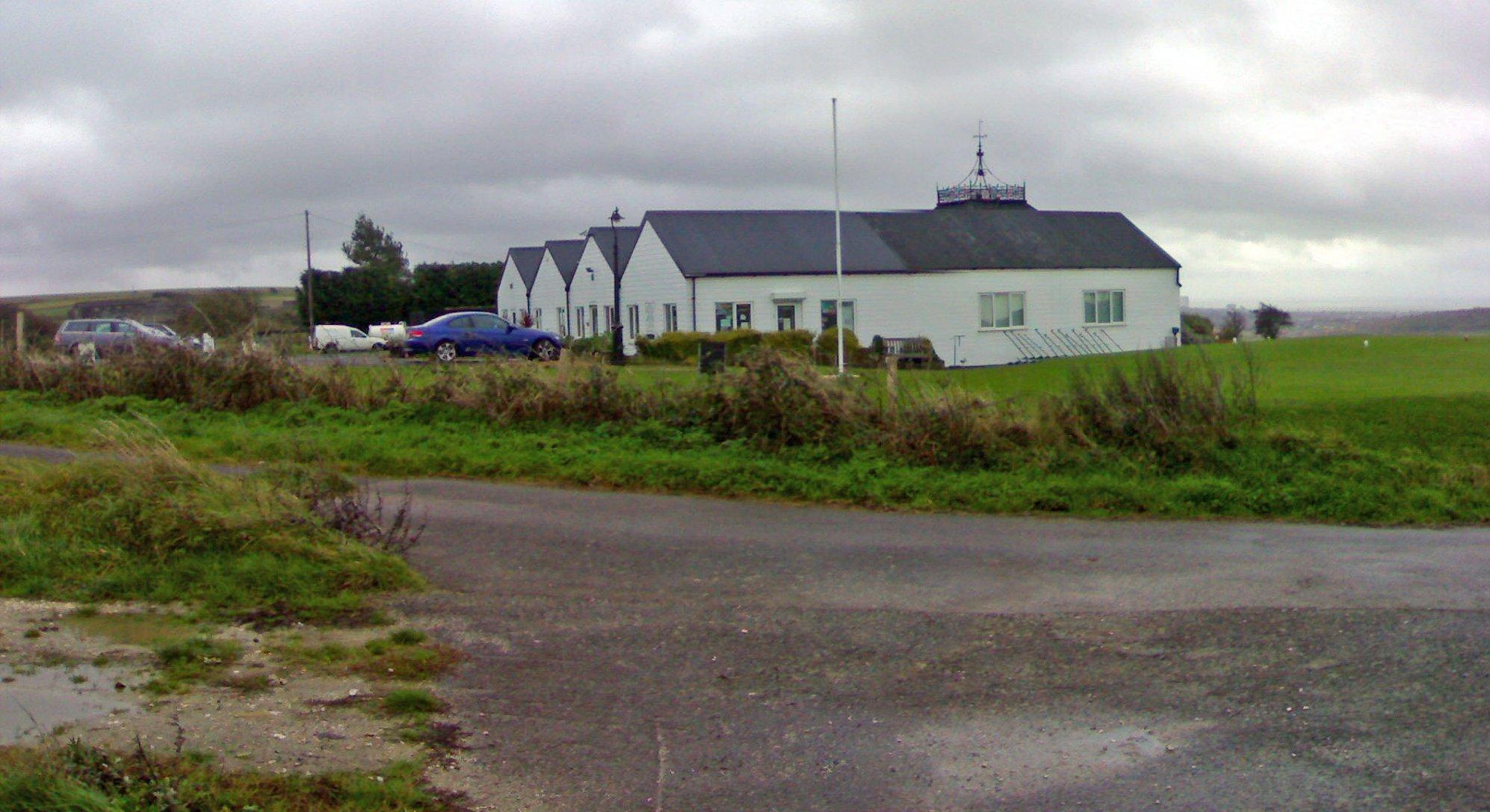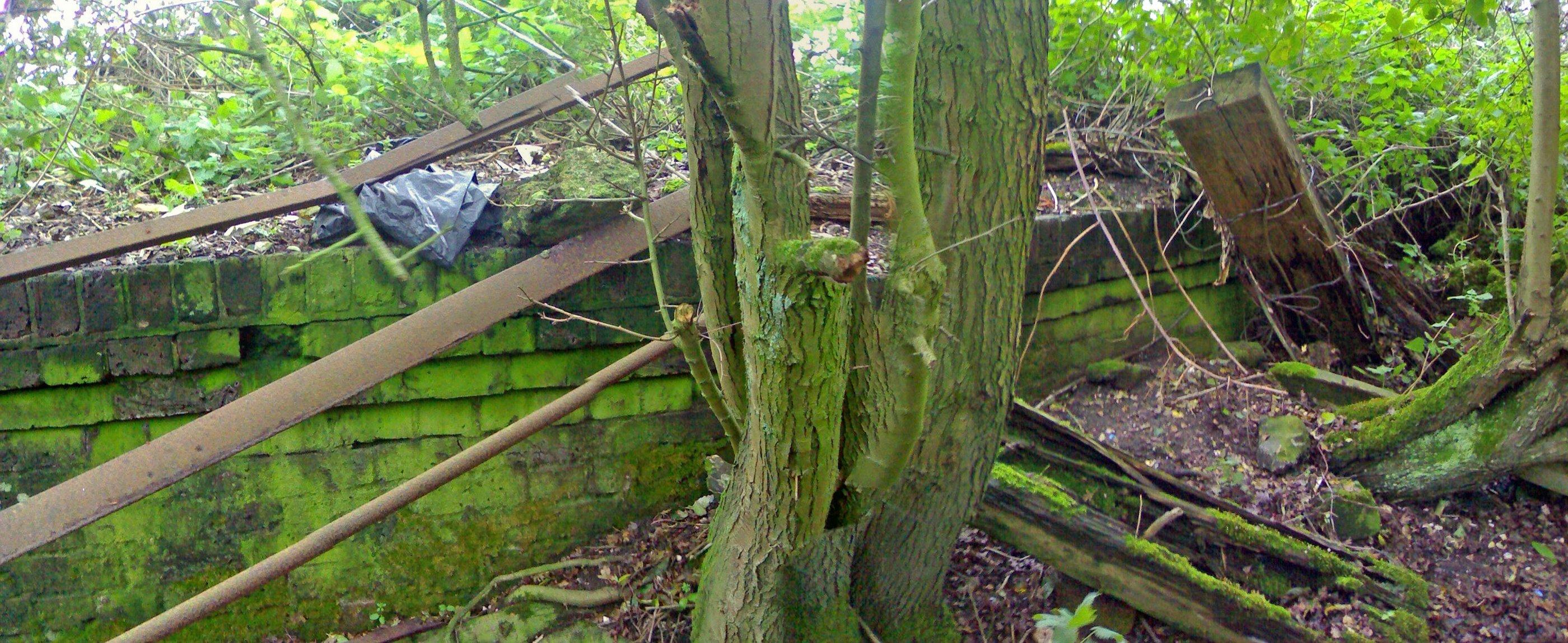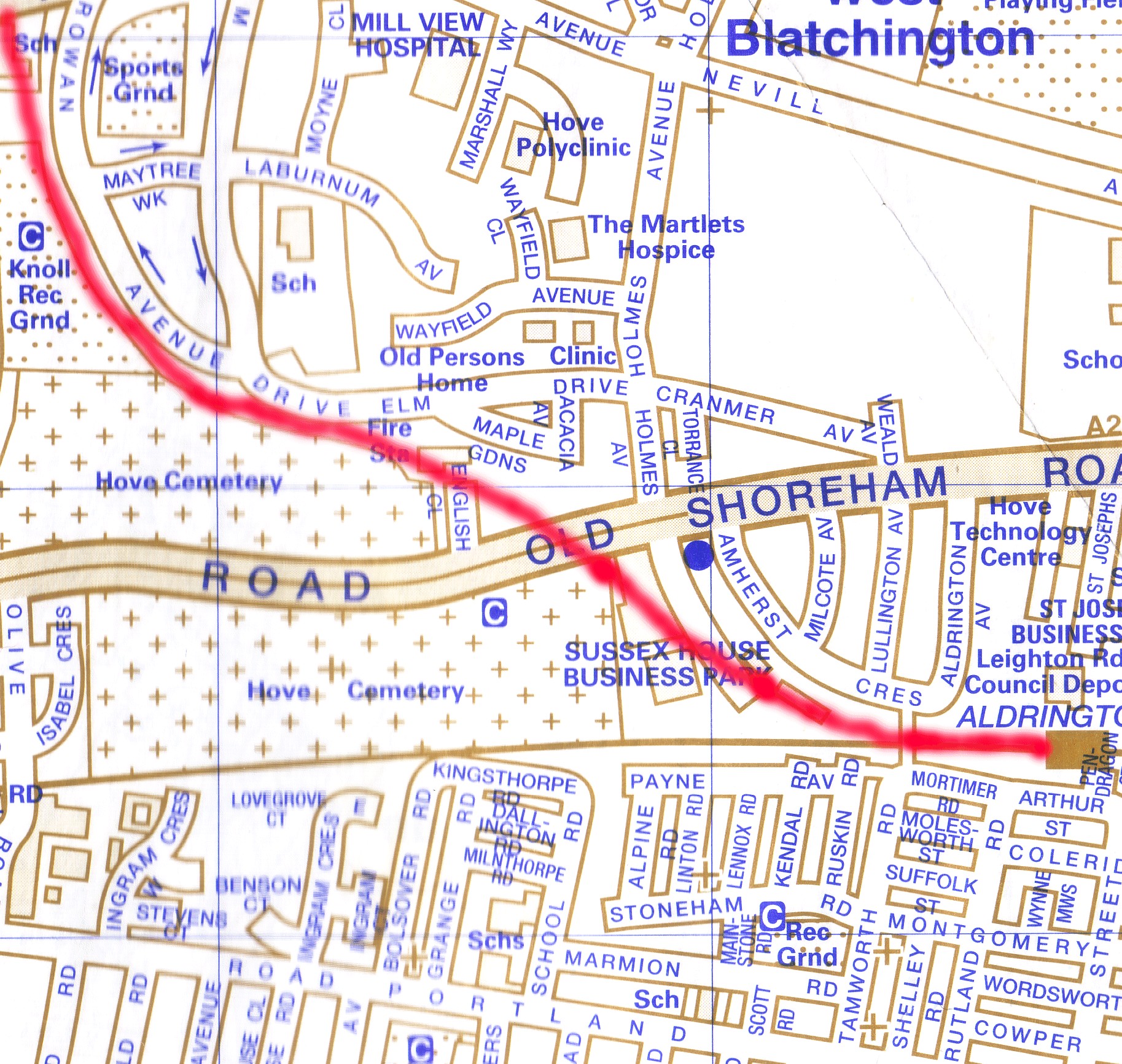
ABOVE: This map shows the path of the
Dyke Railway as it branches off from the South Coast Mainline and curves round
into what is now the Knoll Estate. The approximate path of the line is shown in
red. As the estate was developed while the railway line was still very much in
operation, the boundaries are very definite and it is easy to determine where
the path of the line ran through.
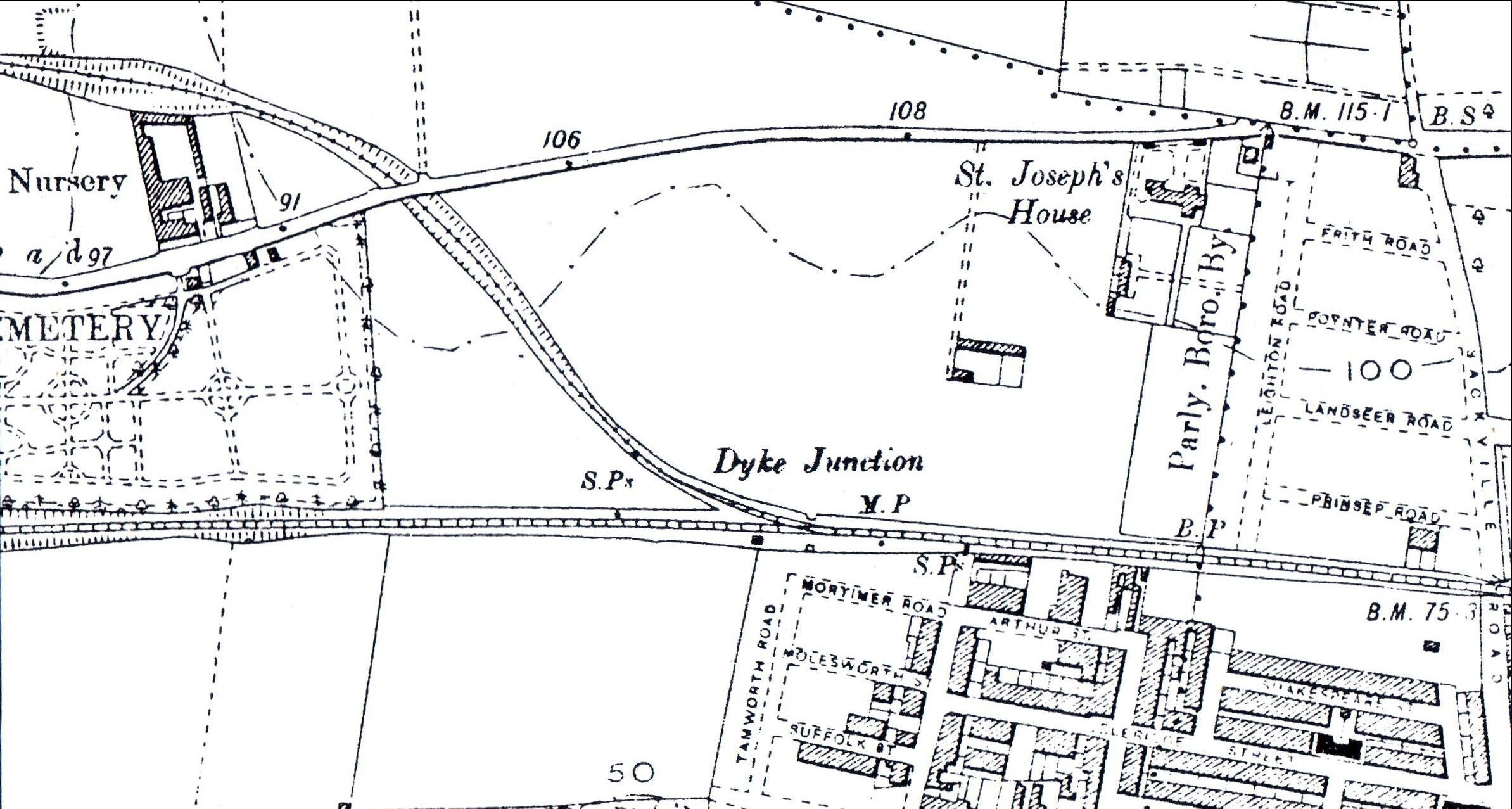
ABOVE: The map shown above dates
from 1899 and shows the path of the Dyke Branch and some of the surrounding
area in greater detail.
The route of the line can still be followed fairly easily in places as the bulk of the route was constructed to serve the housing estates during their construction. This being the case, there is still space in which the original track bed used to run, albeit pressed into other uses.
ABOVE: This photo shows the path of the line in the present day looking roughly North, as it curves round behind houses in Rowan Avenue. It has now been made into a path which leads to Knoll Recreation Ground. This is a good thing because (as has been mentioned in the main text) it makes the route of the Dyke Railway remarkably easy to follow along the bulk of its route. The majority of the route has thankfully been preserved as a Cycle Path. photo by Geoff Marshall
From its start point at Aldrington Halt, the line branched off due north-west from the South Coast Mainline between the tops of
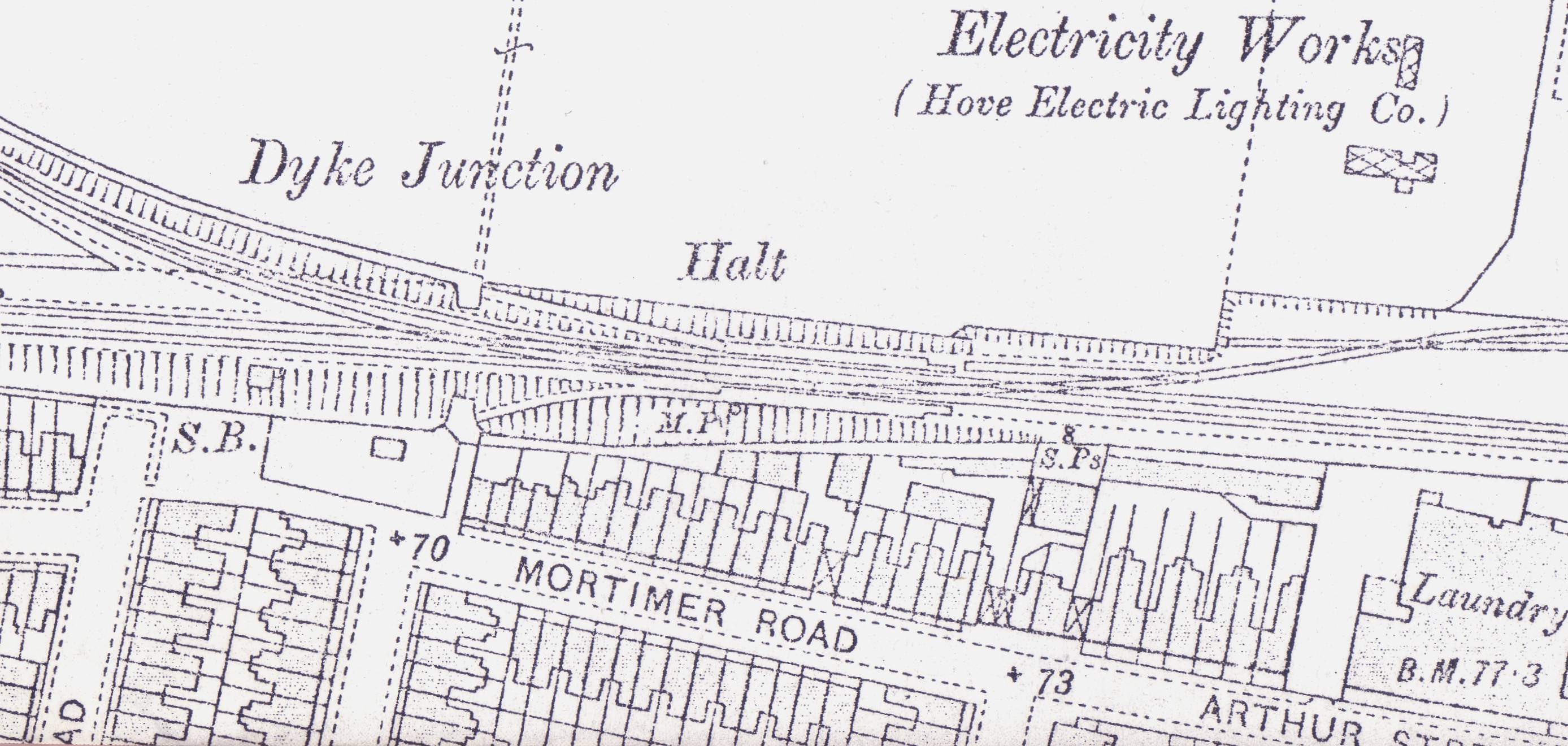
ABOVE: This map shows the junction of the Dyke Railway with the
ABOVE: Although this may appear to be something of a strange and peculiar photo at first view (sorry Geoff!) it is in fact very important, because it pinpoints the exact spot through which the Dyke Railway ran before it went through the bridge under Shoreham Road (nice one Geoff!) The building on the left is Frost's Garage and to the right is the Sussex House Business Park, where PC World is. On the other side of Shoreham Road, the track went through the sites of the fire station and the back of the cemetery in the present day.
photo by Geoff Marshall
BELOW: This photo shows a panoramic view of the Maple Works building. This building sits diagonally opposite the Frosts Garage, on the other side of Shoreham Road and the Railway passed in a cutting right through the middle of this building. Whilst there are some "glitches" in the photo (it is about 8 photos strung together), there are some pretty astonishing cracks in the building, for example between the two windows on the left of the building. These have occured because it was built on top of land fill when the cutting was filled in, which has since subsided and allowed the building to drop, alarmingly! The majority of the cuttings were filled with old WW2 anti-tank blocks taken from the beaches.
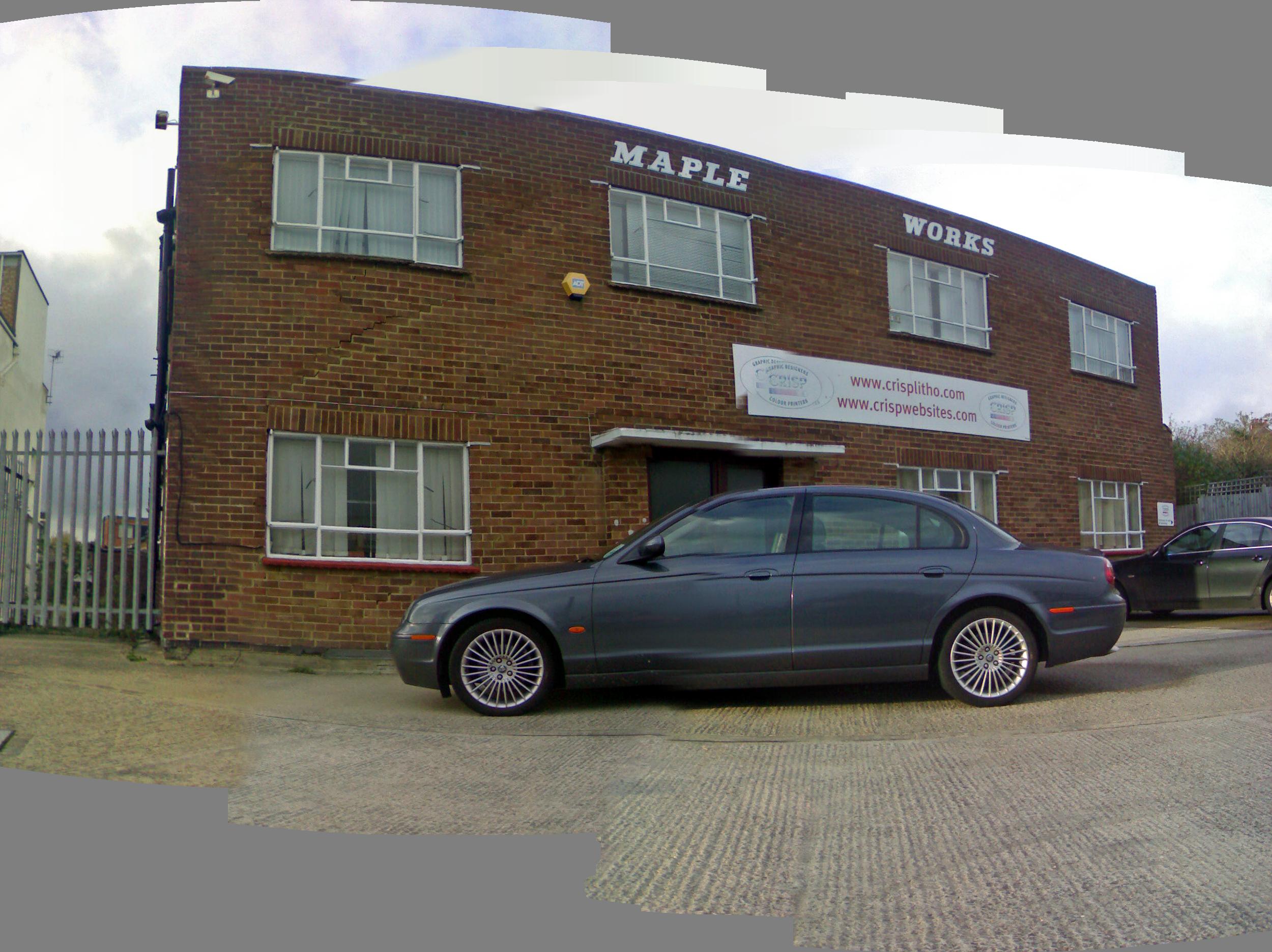
From here the line continued behind

ABOVE: This photo shows the Eastern corner of Hove Cemetery and the Fire Station (in the centre of the picture). The hedge at the left of the picture marks the edge of what was the top edge of the cutting which the railway ran through, the Firestation is actually on the path of the Railway line. Note also Geoff, in deeply contemplative pose!
Footnote: Yes Loz, it was indeed a very contemplative pose; whilst you were taking this photo I had just realised that we were heading toward the very spot I had watched an elder brother of mine laid to rest just a few weeks earlier. His grave is beneath the trees at the extreme right of the picture. - Geoff.

The line continued up behind
CLICK HERE to see a picture of the Hangleton Road Railway Bridge
CLICK HERE to see how it looked when the new Hangleton Road was built
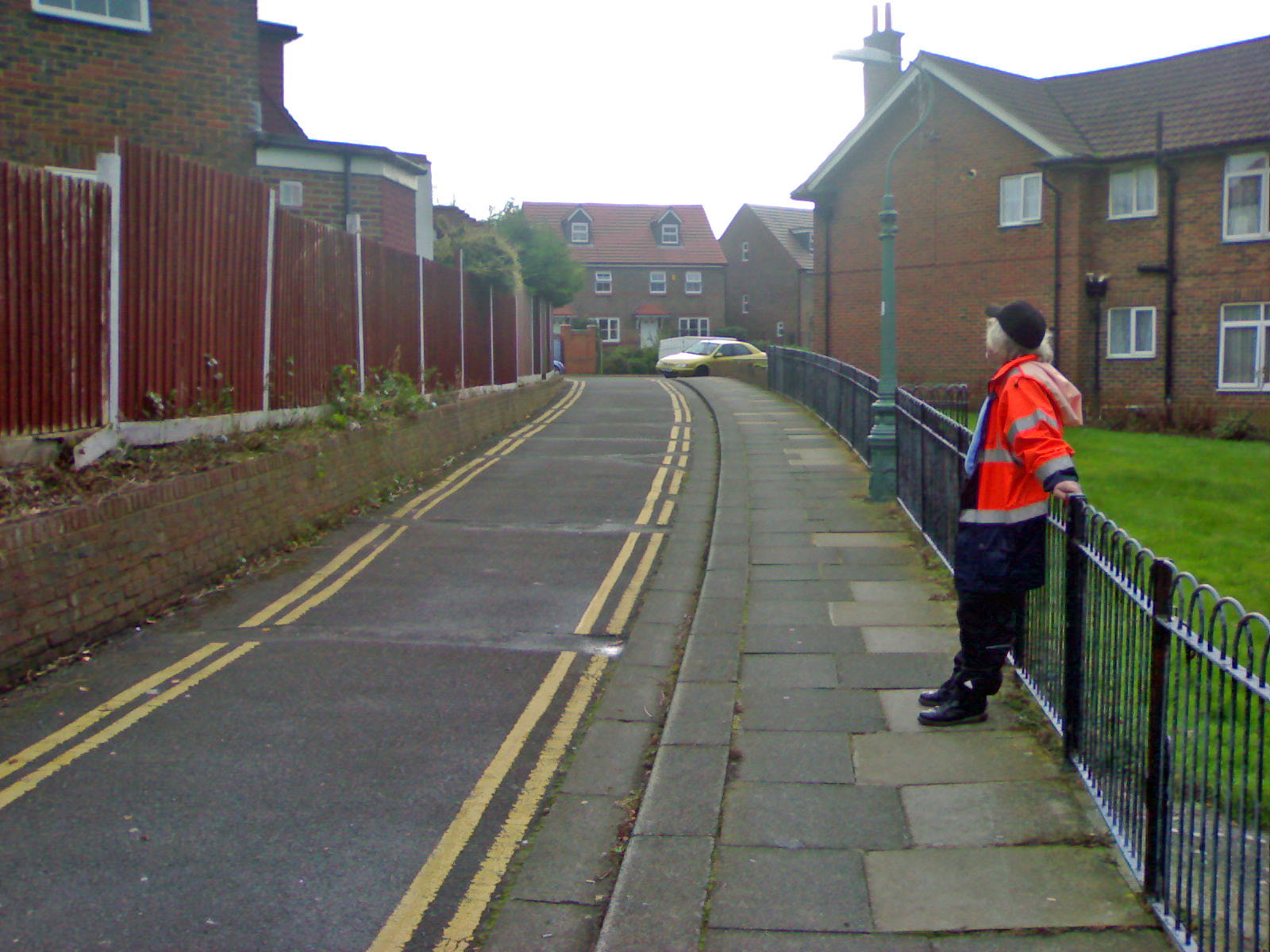

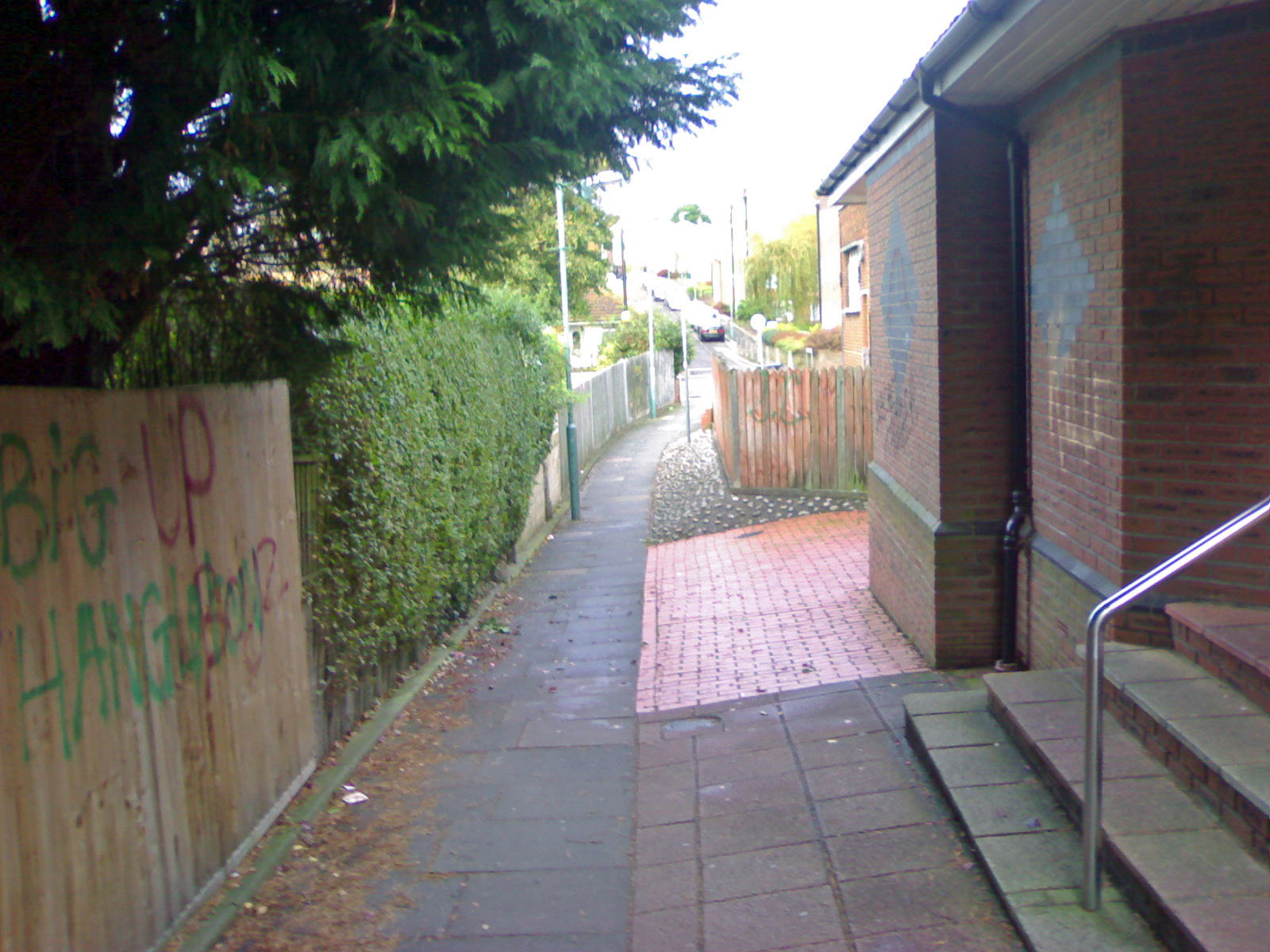
From here the line ran behind the gardens of
ABOVE: This photo shows Kingston Close, running alongside Hangleton Library. The Library and flats are directly on the path of the Dyke Railway and stand on the Northern edge of the Bridge over Westway and the embankment beyond, seen in the old photographs.
photo by Geoff Marshall

ABOVE: This photo shows the exact position of the Occupational Bridge where the railway would have gone under Northease Drive. Hangleton Junior School stands just beyond the fence (see next picture).

ABOVE: This photo shows the grounds of Hangleton Junior School, looking roughly South. The grass area on the left of the photo is built on what was an embankment, where the railway dropped in order to pass under the Occupational Bridge at Northease Drive
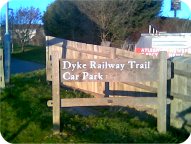

photo owned by Ruth Tyrell and taken from Ruth's Beer Sampling Record (copyright control applies)
CLICK HERE to see where the Dyke Railway crossed what is now Hangleton Way
CLICK HERE to see another one
And another one!
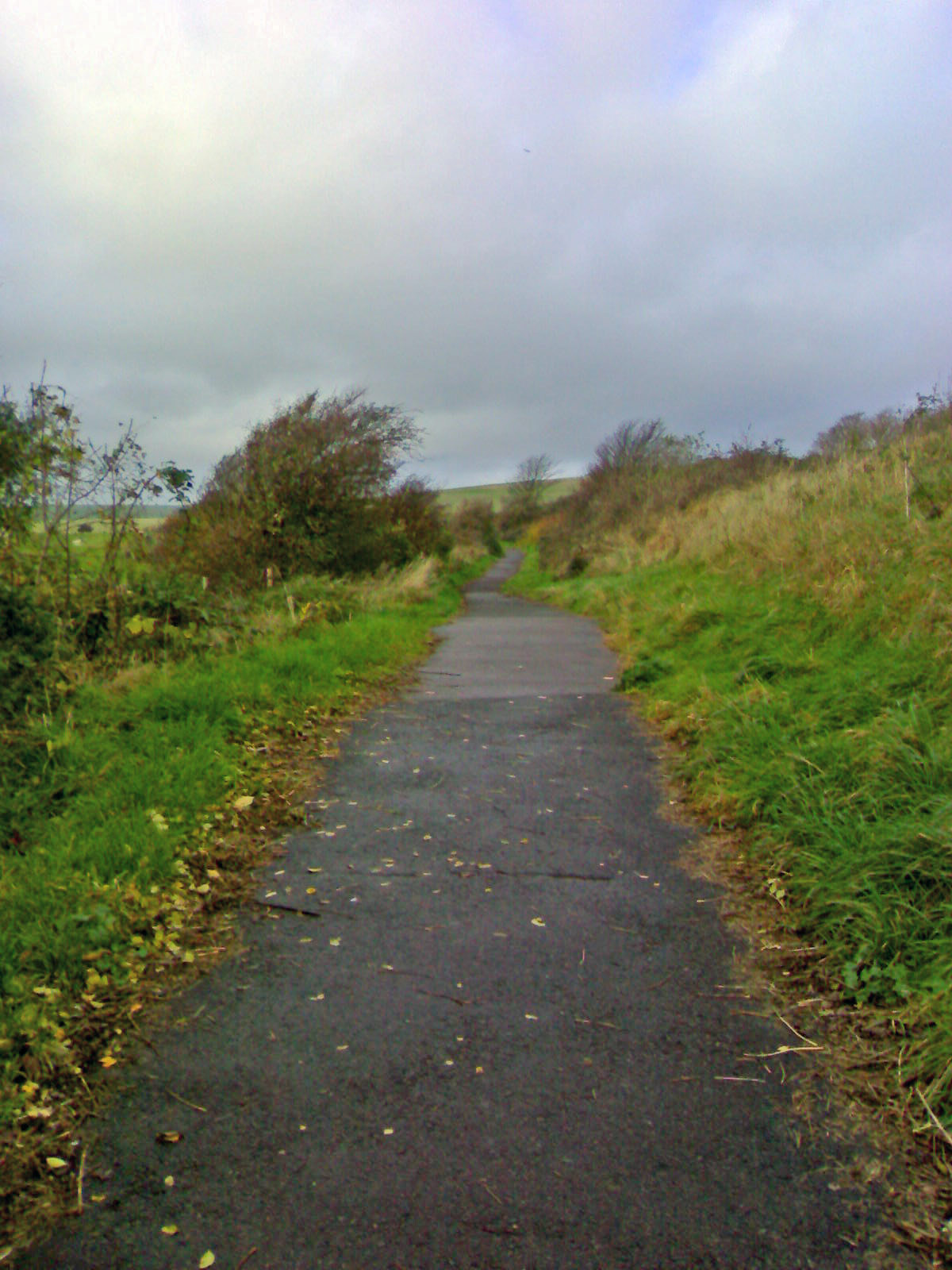
By 1895 an arrangement had been made so that when the starting signal at Dyke Station was lowered a bell rang in the Golf Club house allowing golfers to quickly finish their drinks and hurry to the platform!
The site of the platform can still be determined in the present day although most of the brickwork and any outbuildings have since long gone. There is no right of way northwards as the remainder of the route is now predominantly running through farmland. However, the route can be discerned and the Dyke Station was to the east of the double fronted building in the distance at map reference TQ 260 103.
